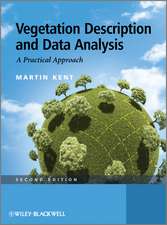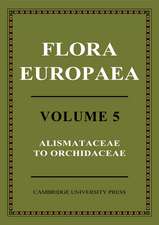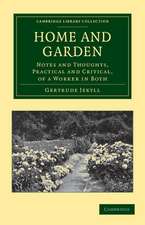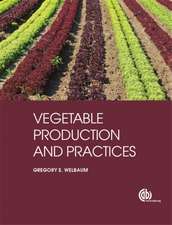Gene Manipulation in Plant Improvement II: 19th Stadler Genetics Symposium: Stadler Genetics Symposia Series
Editat de J. Perry Gustafsonen Limba Engleză Paperback – 13 apr 2012
Preț: 403.53 lei
Nou
Puncte Express: 605
Preț estimativ în valută:
77.24€ • 83.93$ • 64.92£
77.24€ • 83.93$ • 64.92£
Carte tipărită la comandă
Livrare economică 21 aprilie-05 mai
Preluare comenzi: 021 569.72.76
Specificații
ISBN-13: 9781468470499
ISBN-10: 1468470493
Pagini: 452
Ilustrații: 438 p.
Dimensiuni: 178 x 254 x 24 mm
Greutate: 0.78 kg
Ediția:Softcover reprint of the original 1st ed. 1990
Editura: Springer Us
Colecția Springer
Seria Stadler Genetics Symposia Series
Locul publicării:New York, NY, United States
ISBN-10: 1468470493
Pagini: 452
Ilustrații: 438 p.
Dimensiuni: 178 x 254 x 24 mm
Greutate: 0.78 kg
Ediția:Softcover reprint of the original 1st ed. 1990
Editura: Springer Us
Colecția Springer
Seria Stadler Genetics Symposia Series
Locul publicării:New York, NY, United States
Public țintă
ResearchCuprins
Plant Breeding and the Value Contributed to Cereal Grain and Oilseed Production in Western Canada.- Self-pollinated Crop Breeding: Concepts and Success.- The Romance of Plant Breeding and Other Myths.- Targeting Genes for Genetic Manipulation in Crop Species.- Incompatibility Barriers Operating in Crosses of Oryza sativa With Related Species and Genera.- Wheat x Maize and Other Wide Sexual Hybrids: Their Potential For Genetic Manipulation and Crop Improvement.- Induced Mutations — An Integrating Tool in Genetics and Plant Breeding.- In Vitro Culture of Rice: Transformation and Regeneration of Protoplasts.- In Vitro Manipulation of Barley and Other Cereals.- Transformation and Regeneration of Non-Solanaceous Crop Plants.- Haploids in Cereal Improvement: Anther and Microspore Culture.- Transgenic Plants.- Transformation and Regeneration of Important Crop Plants: Rice as the Model System For Monocots.- Genetic Transformation of Maize Cells by Particle Bombardment and the Influence of Methylation on Foreign-Gene Expression.- Non-conventional Resistance to Viruses in Plants — Concepts and Risks.- Plant Transformation to Confer Resistance Against Virus Infection.- Using Plant Virus and Related RNA Sequences to Control Gene Expression.- Mapping in Maize Using RFLPs.- RFLP Mapping in Wheat — Progress and Problems.- New Approaches for Agricultural Molecular Biology: From Single Cells to Field Analysis.- Regulation of Plant Gene Expression by Auxins.- The Molecular Basis of Variation Affecting Gene Expression: Evidence From Studies on the Ribosomal RNA Gene Loci of Wheat.



















